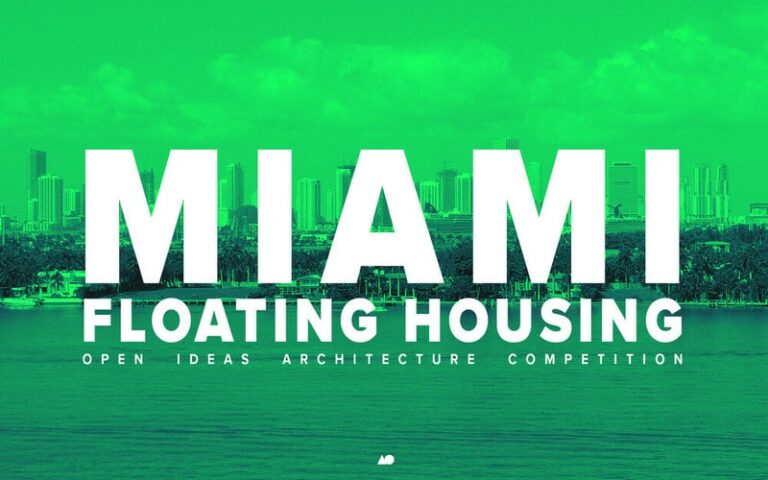
Intro
Miami is facing two major emergencies.
First, it has become the least affordable US city to live in. Its housing stock has been depleted by its quickly growing population, accelerated by more people moving during the recent pandemic. Recent reports suggest nearly 1000 people are moving to Florida each day. New developments are pushing rental rates and costs of housing higher, making areas now unaffordable, and pricing people out of their neighbourhoods.
Miami’s second major emergency comes from the growing realization that its housing is greatly threatened by rising sea levels caused by climate change. Miami Dade County contains 26% of all U.S. homes at risk from sea level rise. Some insurance companies are cancelling services for high-risk flood zones, potentially leaving a portion of the population homeless after a major hurricane.
These two problems, combined together, demand new solutions for housing in Miami. How can we design solutions that not only create affordable housing but also make it resilient to the looming problem of sea-level rise?
Challenge
The problems of rising sea level and housing affordability in Miami merge as a new phenomenon called “climate gentrification”. Current residents of neighbourhoods located on the higher ground within the city are being displaced by coastal residents looking to escape the rising seas and flooding.
Little Haiti and Little River are two bordering neighbourhoods located north of downtown Miami just west of Biscayne Bay. They have rich cultural histories filled with Haitian and Caribbean residents who have lived in these neighbourhoods their entire lives, and some for multiple generations. However, recently they have become hotspots for new developments and climate gentrification. This is primarily due to parts of the neighbourhood having higher elevations that attract developers to invest in new buildings, making rent and home prices rise higher than the longtime residents can afford. The northern edge of these areas is at high risk of sea-level rise due to its proximity to the Little River Canal, further amplifying the number of displaced residents.
The recent development and revitalization of the neighbourhoods brings about its own underlying uncertainties: will longtime residents be able to find affordable housing near their current homes and communities? And, if so, how can they protect themselves from the risk of being displaced again due to sea level rise?
Arch Out Loud calls on designers to propose solutions for floating housing in Miami’s Biscayne Bay.
Site
The site for the competition is located in Biscayne Bay, north of downtown Miami, and just off of the coast of Legion Park. The park is slightly east of Little Haiti and connects the surrounding neighbourhood to the waterfront.
How can the floating housing connect to local amenities and provide a healthy and sustainable place to live for its new residents?
Drone photography and videos will be provided upon registration along with the full 3D model of the competition site within the larger city area.
Certificate + Press Publications for all award categories mentioned above.
(x1) ARCH D size board
( 24” x 36” / 610mm x 914mm )
(x1) Project text summary
( 8.5” x 11” / 20.32 cm x 25.4 cm )
(under 200 words)
| $55 Advance Entry deadline | August 2, 2022 |
| $75 Early Entry deadline | September 27, 2022 |
| $95 Regular Entry deadline | November 8, 2022 |
Arch Out Loud provides free material that can be viewed before registration. After completing the registration process each team will receive an expanded set of materials in the official registration package.
Find more information about this competition here – Competition Website
© 2022 Deziko Web LLP. All rights reserved.
Got a question? We’d love to hear from you. Send us a message and we’ll respond as soon as possible.